#vatican2
Explore tagged Tumblr posts
Text
For those who never heard this song before...
This was written in 1969 in the height of the folk music era. At the time the Catholic church was allowing less traditional hymns to be sung at mass. This Author also penned Up To Jerusalem, a perennial favorite. The version I'm singing comes from the People Mass Book. This book also contain most of Ray Repp's repertoire.(try saing that three times fast.) There was an issue with copyright and Ray Repp removed his permission to use his songs. The Church was selling song books and making money and he was not getting residuals. I can understand that. Ray Repp passed in 2020. I'm not sure who owns the rights to the songs now, but he did have heirs so I would make an educated guess they have the rights. There were other church folk music books including Mass for Young Americans and Hymnal for Young Christians.

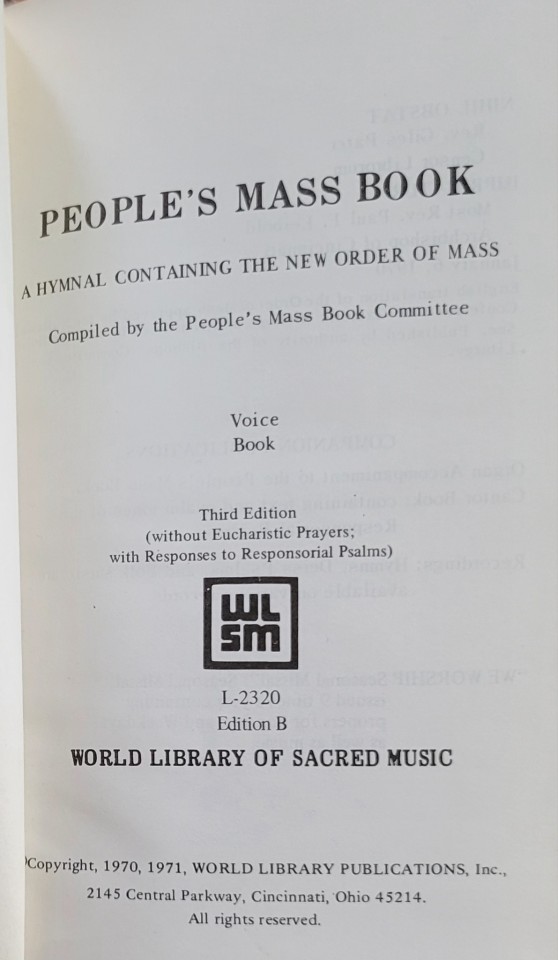
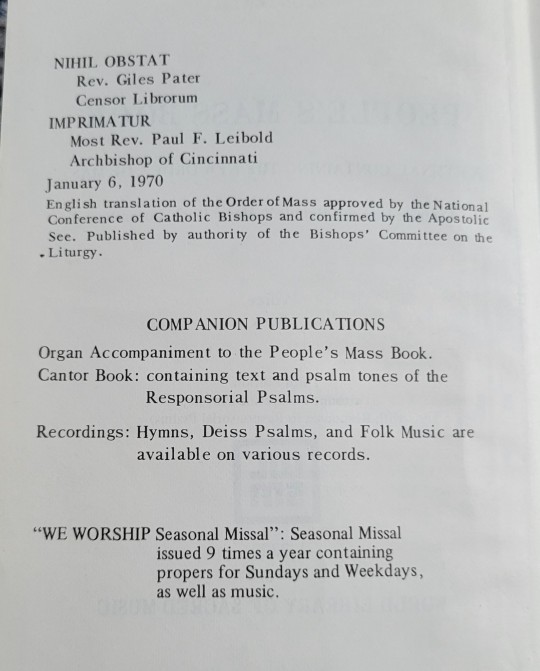
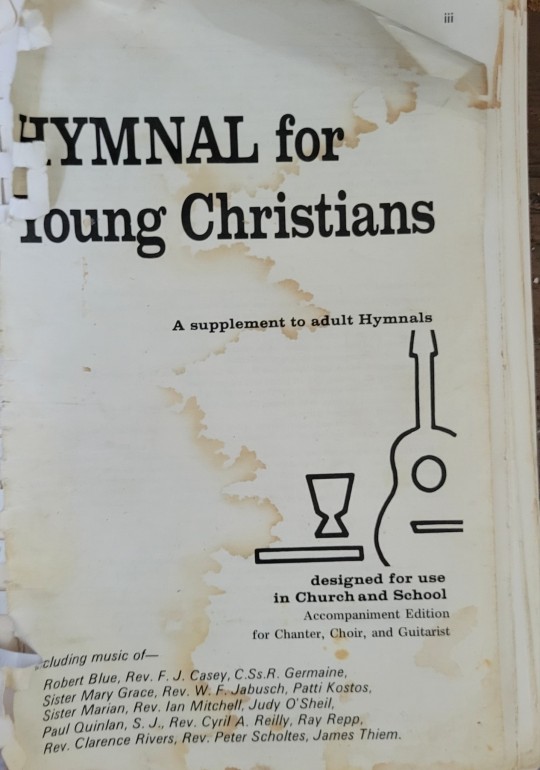


#folkmass, #folksongs, #imprimatur, #nihilobstat, #protestsong, #religiousmusic, #sixtiesmusic, #sixtiessongs, #vatican2, #Butthencomesthemorning, #churchsongs
#folkmass#folksongs#imprimatur#protestsong#religiousmusic#sixtiesmusic#sixtiessongs#Butthencomesthemorning#churchsongs
0 notes
Text
Traditionis Custodes -
Franziskus und die "Alte Messe"
"Roma locuta, causa finita" - Rom hat gesprochen, Fall erledigt.
In der vergangenen Woche hat der Heilige Vater, Papst Franziskus, ein für ihn doch ungewöhnlich deutliches Machtwort gesprochen. Der Papst, der eigentlich bekannt dafür ist, eher uneindeutige Aussagen zu treffen, welche einen schier unendlichen Spielraum für Interpretationen bieten, hat in seinem jüngsten Motu Proprio "Traditionis Custodes" (dt. "Wächter der Tradition") die Feier der Heiligen Messe nach dem Messbuch von 1962 - die sogenannte Alte oder Tridentinische Messe - erheblich eingeschränkt und gleichzeitig damit auch das Motu Proprio Papst Benedikts XVI. - Summorum Pontificum - außer Kraft gesetzt. Das hat ein durchwachsenes Echo innerhalb der Kirche hervorgerufen. Insbesondere bei den Anhängern des überlieferten Messritus fühlt man sich missverstanden, ja geradezu bestraft.
Der Heilige Vater begründet seine Entscheidung damit, dass die Großzügigkeit seiner beiden direkten Vorgänger, die als Versöhnung zwischen zwei Strömungen in der Kirche gedacht war, missbraucht wurde, um gegen Entscheidungen des II. Vatikanischen Konzils und damit gegen die Kirche aus dem inneren heraus zu opponieren und ihr damit Verletzungen zuzufügen.
1969 ging das zweite Vaticanum zuende. Es beauftragte die Kirche unter anderem, die Liturgie insbesondere der Heiligen Messe den veränderten Bedürfnissen der Zeit entsprechend zu überarbeiten. 1970 dann veröffentlichte Papst Paul VI. das neue "Missale Romanum" und verfügte, dass fortan alle Heiligen Messen ausschließlich nach diesem Messbuch zu feiern seien.
Die Liturgie der Alten Messe entsprang dem Konzil von Trient, 1570. Das Konzil war eine gegenreformatorische Reaktion auf Martin Luther und seine sogenannte "Reformation" der Kirche, aus der die kirchlichen Gemeinschaften reformatorischer Tradition - u.a. die evangelisch-lutherische Kirche - hervorgingen. Was von Luther als Erneuerung begonnen wurde, entwickelte sich zu einer Kirchenspaltung in Europa, der man in Trient entgegen wirken wollte. Das Konzil reformierte die Liturgie der Kirche - oder besser der Kirchen, denn bis dahin existierten viele verschiedene, teils mehr teils weniger stark unterschiedliche Messriten parallel in Europa. In Einheit sollte die Kirche ihre Heilige Messe feiern; von jedem Katholiken sollte sie unabhängig seiner sprachlichen oder territorialen Hintergründe problemlos mitgefeiert werden können. Als 400 Jahre später Paul VI. die neue Messliturgie verfügte, wurde das vor allem in Deutschland und den Beneluxländern als Aufforderung verstanden, mit allem Alten zu brechen. Gemäß dem "Aggiornamento" Papst Johannes XXIII. ("Fenster öffnen") wurde speziell hier ein radikaler Bruch der Tradition sowohl in der Liturgie als auch in der Gestaltung der Kirchenräume vollzogen.
Die Auseinandersetzung um die Liturgie begann kurz nach dem Konzil. Erzbischof Marcel Lefèbvre war ein entschiedener Gegner der Liturgiereform und lehnte das Konzil u.a. aufgrund des beschlossenen Bekenntnisses zur allgemeinen Religionsfreiheit ab. Er gründete die "Priesterbruderschaft St. Pius X." (FSSPX), die sich der Feier der Heiligen Messe im überlieferten Ritus verschrieb und die Kirche von ihrem nach ihrer Ansicht häretischen Irrweg abbringen wollte. Entgegen dem Willen des Papstes weihte Lefèbvre Priester. Der Konflikt gipfelte in den achtziger Jahren des letzten Jahrhunderts, als Erzbischof Lefèbvre vier Priester der Bruderschaft zu Bischöfen weihte. Kurzerhand exkommunizierte der Vatikan den Erzbischof und die vier geweihten, erklärte sämtliche Weihen für illegal und verbot den Empfang der Sakramente durch Priester der FSSPX. Im Rahmen dieses Konfliktes entstand die "Priesterbruderschaft St. Petrus" (FSSP) durch vier ehemalige Mitglieder der Piusbruderschaft. Die FSSP gelobte Gehorsam dem Papst und der Kirche, erkannte das II. Vatikanische Konzil an und verschrieb sich der Traditionspflege innerhalb der Communio mit der Kirche.
In den folgenden Jahren erließen Papst Johannes-Paul II. und Benedikt XVI. zunächst zögerliche, dann allgemeine Genehmigungen zur Feier der Heiligen Messe im "Usus antiquior". Besonders Benedikt betonte, dass das, was Generationen zuvor gut und heilig war, nicht über Nacht böse sein und verboten werden konnte. Mit seiner Unterscheidung in den ordentlichen Messritus (Missa in Forma Ordinaria) und den außerordentlichen (Missa in Forma extraordinaria, dem "Usus antiquior") verfügte Benedikt, dass es zwei Ausdrucksformen des einen, römischen Messritus geben könne, welcher Ausdruck der Lex orandi sei. Benedikt versuchte so, die Gräben zwischen traditionellen und liberalen Strömungen in der Kirche zuzuschütten und beide Seiten miteinander zu versöhnen.
Mit dem Motu Proprio "Traditionis Custodes" hat Papst Franziskus nun diesen Weg nach 16 Jahren für gescheitert erklärt und Summorum Pontificum außer Kraft gesetzt. Aber das führt nun einige logische Probleme mit sich.
Da wäre zum einen die Aufhebung der beiden Formtitel. Franziskus hat explizit den Römischen Ritus nach dem Missale Romanum von 1970 zur einzigen Ausdrucksform der Lex Orandi bestimmt. Damit hat er gleichzeitig die ehemals außerordentliche Form des Römischen Ritus in ein liturgisches Nirvana verbannt. Folgerichtig könnte nun die Sonntagspflicht eines Katholiken nicht mehr innerhalb einer altrituellen Heiligen Messe wahr genommen werden - gleichzeitig aber wird durch die gültige Weihe nach wie vor Hostie und Wein in Leib und Blut Christi gewandelt. Der Status der Alten Messe ist also gegenwärtig unklar.
Da Franziskus mit einem Motu Proprio ein anderes Motu Proprio außer Kraft gesetzt hat, dürfte es nicht lange dauern, bis die ersten Diskussionen um "Ordinatio Sacerdotalis" und dessen Rücknahme wieder aufflammen werden. In Ordinatio Sacerdotalis stellt der Hl. Papst Johannes-Paul II. klar, dass die Kirche nicht die Vollmacht habe, Frauen zu Priesterinnen zu weihen, was ein für alle Mal von der ganzen Kirche geglaubt werden solle. Insbesondere in deutschen Bistümern ist dieses Motu Proprio ungeliebt und man sähe es lieber gestern als heute außer Kraft gesetzt. Vermutlich ohne dies zu wollen hat der Heilige Vater nun diese Möglichkeit eröffnet.
Die Grabenkämpfe dürften durch TC nun überhaupt erst Fahrt aufnehmen - zu Lasten derer, die die Heilige Messe im Usus Antiquior besuchen. Konnten die Altritualisten sich bis letzte Woche noch auf die generelle Erlaubnis Roms berufen, werden sie nun vermutlich ins Kreuzfeuer der liberalen Kräfte geraten, denen die Tradition im Ganzen ohnehin überwiegend ein Dorn im Auge ist.
Natürlich darf eines nicht geleugnet werden: Der Beweggrund des Papstes ist nicht völlig aus der Luft gegriffen. Innerhalb der Gruppe der Altritualisten gibt es kleine, aber schrille und laute Grüppchen, die von sich selbst sagen, die wahrer der Tradition zu sein und alles als häretisch betrachten, was nicht zu einhundert Prozent ihrer Linie folgt. In diesen kleinen Grüppchen sind sogar rechte Tendenzen und Sympathien zur AfD deutlich erkennbar. Aber ist dies ausreichend dafür, die gesamte Anhängerschaft der alten Liturgie mitzubestrafen?
Ein oft ins Feld geführte Argument der liberalen ist, dass Christus ja eigentlich gar keine Kirche, keine Liturgie, keine Rituale wollte. Aber kann man das so platt sehen?
Christus hat viel und häufig die Pharisäer und Hohepriester getadelt, sie heuchlerisch genannt und ging hart mit ihnen ins Gericht. Aber Jesus feierte auch die Feste nach den mosaischen Gesetzen, ging in Synagogen und zum Tempel. Er war praktizierender Jude. Und als solcher und aus der Sicht der Gottessohnschaft lehnte er nicht einfach plump Traditionen und Rituale ab, weil sie alt gewesen sein mögen. Er lehnte sie immer dann ab, wenn hinter den Ritualen kein gottgefälliges Leben stand; wenn die Treue zum Gesetz und die Liebe zu Gott bereits an der Synagogentür endeten. Immer dann waren ihm diese vorgeschobenen Rituale ein Gräuel (vgl. mit dem Gleichnis vom Pharisäer und vom Zöllner).
Es gibt noch ein Problem, welches Franziskus zwar angesprochen hat, von dem jedoch nicht klar ist, ob und wie er es lösen will: Der Liturgiemissbrauch in den Heiligen Messen nach dem "neuen" Missale Romanum. Papst Franziskus beklagt in seinem Begleitschreiben an die Bischöfe, dass vieler Orts das Missale so verstanden worden sei, als fordere es förmlich zu Kreativität auf! Bei dieser Klage ist es dann jedoch geblieben und es bleibt abzuwarten, was nun auf diese Klage folgen wird. Denn auch diese Missbräuche sind der Ursprung dafür, warum so viele Katholiken sich in die Alte Messe zurück gezogen und diese letztlich lieben gelernt haben. Unter ihnen sind letztlich nicht wenige, die in ihren Heimatpfarreien Funktionsträger sind in Gremien oder Gebetsgruppen. Will man diesen wieder eine Heimat bieten im "neuen Ritus", muss der überbordende Missbrauch des Missale Romanum eingeschränkt werden.
Wann dies geschehen wird? Beten wir am Besten dafür und für unseren Heiligen Vater.
2 notes
·
View notes
Note
lucky... one of my professors doesn't like me bc i'm catholic + have all 13 years of catholic schooling. she also hasn't interacted w the church since pre-vatican2 soooo
pre vatican2 church people are little bitches who know latin don’t pay attention to her she’s just mad because the world changed without her because objectively all of us are in the world and it moves on
#bro i'm gonna be real with you: how the fuck isn't she dead#i'm kidding my grandparents were also pre vatican 2 but my grandpa likes church now#he says it's an improvement although he keeps wanting to bring jack daniels in
8 notes
·
View notes
Text
"Jai oublié ce que je voulais en dire. Ah oui qu'il serait temps que jesus aie sa propre tv réalité aussi #vatican3" JJ #vatican2 #vatican3 #vaticanIII #vaticanII
#vatican3#vatican2#vaticanIII#vaticanII#vaticano III#vaticano II#vaticano 3#vaticano 2#vatican II#vatican III#vatican 3#vatican 2
0 notes
Photo
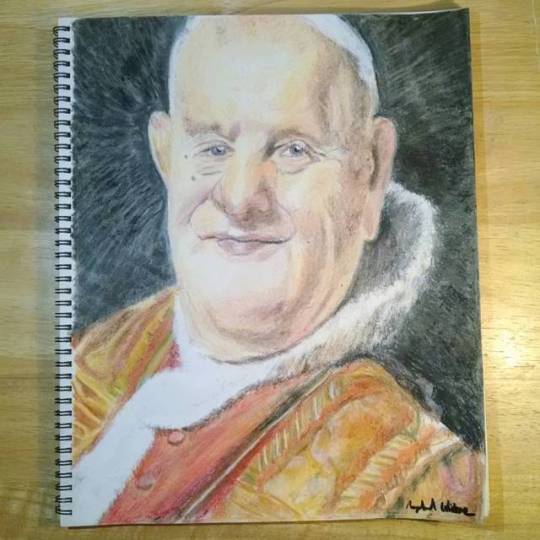
#popejohnxxiii #johnxxiii #juanxxiii #angelogiusepperoncalli #john23 #pope #vatican2 #tlm #paceminterris #prismacolor #prismacolorstix #drawing #portrait #creative #sketch #srtwork #blackbackground #oldschoolcool
#tlm#juanxxiii#creative#portrait#johnxxiii#drawing#popejohnxxiii#pope#john23#sketch#blackbackground#srtwork#oldschoolcool#prismacolor#vatican2#paceminterris#angelogiusepperoncalli#prismacolorstix
0 notes
Text
Tweeted
#sedevecantist #Covid_19 #QAnons #BillGatesVirus #PopeFrancis #pachamama #apocalypse #vatican2 It’s just too much to stay calm about. Unless you stay on that rosary
— Carlos Sanchez Bonano (@casbonano) March 29, 2020
0 notes
Video
youtube
The Vortex—Vatican II Virus. A virus invaded the Catholic Church in the wake of Vatican II.
=== Let us pray that many more Catholics will realize the truth and turn away from modernism - the church of nice... back to Church Militant.
0 notes
Text
Conflicts on thoughts...
I'm having thoughts about the following statements of Sen. Miriam Defensor-Santiago:
“Under Vatican 2, there is no hell; but even if there is, there is nobody there,”
“In theology, hell is not a geographical place, but is a metaphor for distance from God,”
“Under Vatican 2, the story of Genesis is no longer a historical fact but a myth. The Bible should not be read literally, but should be read in its Aramaic context. Unfortunately, some of the religious refuse to accept the changes started by Vatican 2,”
I'm curious about the Vatican 2 and I will be going on some research about it.
0 notes
Text
Tweeted
Whosoever will be saved, before all things it is necessary that he hold the Catholic Faith; which Faith except every one do keep whole & undefiled, without doubt he shall perish everlastingly. The Athanasian Creed#Catholic #Sedevacante #Vatican2 #IntegralCatholic #truth
— Fr. Despósito (@FrDesposito) November 18, 2019
0 notes
Text
Tweeted
The Indult mass is not the TLM. The Indult mass is not the TLM. The Indult mass is not the TLM. The Indult mass is not the TLM. The Indult mass is not the TLM. The Indult mass is not the TLM. The Indult mass is not the TLM. The church created at #vatican2 is not #Catholic.
— Procinctu (@TheProcinctu) December 7, 2019
0 notes
Text
Tweeted
"The shielding if sexual predators is immoral; this must go in the Novus ordo suggestion rulebook. And not only the shielding, but the prodding - because when the crazed lust returns, innumerable lives will be destroyed." #vatican2 #fakecatholic https://t.co/tFvYYt1oJn
— Procinctu (@TheProcinctu) November 27, 2019
0 notes
Text
Tweeted
We should be careful not to fall into the trap of Latin Mass-ism, a system whereby we believe that all that really matters is attending a TLM. We are in this mess because of Vatican2 because of a mass defection from the faith of our fathers. Restore that, and the TLM will follow
— Nigerian Sede (@STRCngr) November 3, 2019
0 notes
Text
Otdimjh 26 Ocober 2005 Cardianl Lustiger marks the 40th anniversary of the Second Vatican Council

“What an amazing path we have travelled, Jews and Catholics for more than half a century!”
Aaron Lustiger was born in Paris of Ashkenazi Jews from Będzin, Poland, in 1926. He studied at in Paris, where he first encountered anti-Semitism. Visiting Germany in 1937, he was hosted by an anti-Nazi Protestant family whose children had been required to join the Hitler Youth. Sometime between the ages of ten and twelve, Lustiger came across a Protestant Bible and felt inexplicably attracted to it. On the outbreak of World War II in September 1939, the family moved to Orléans.
In March 1940, during Holy Week, the 13-year old Lustiger decided to become a Roman Catholic. On 21 August he was baptized as Aaron Jean-Marie by the Bishop of Orléans, Jules Marie Courcoux. His sister also became a Catholic. In October 1940, the Vichy regime passed the first Statute on Jews, which forced Jews to wear a yellow badge. Although Jean-Marie Lustiger lived hidden in Orléans, his parents had to wear the yellow star.
Lustiger, his father and sister sought refuge in unoccupied southern France, while his mother returned to Paris to run the family business. In September 1942, his mother was deported to the Auschwitz-Birkenau concentration camp where she died the following year. The surviving family returned to Paris after the war. Lustiger's father tried unsuccessfully to have his son's baptism annulled, and even sought the help of the chief rabbi of Paris. He was Archbishop of Paris from 1981 until his resignation in 2005. He was created cardinal in 1983 by Pope John Paul II.

Lustiger always affirmed his Jewish identity, and his book La Promesse is a profound reflection on the nature of his call and ministry as a Jewish disciple of Yeshua and leader in the Catholic Church. He said:
I was born Jewish and so I remain, even if that is unacceptable for many. For me, the vocation of Israel is bringing light to the goyim. That is my hope and I believe that Christianity is the means for achieving it.
His epitaph in the crypt of Notre Dame Cathedral in Paris reads:
I was born Jewish. I received the name Of my paternal grandfather, Aaron Having become Christian By faith and by Baptism, I have remained Jewish As did the Apostles.
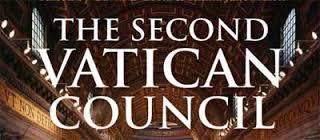
Lustiger spoke at a special conference to commemorate
the 40th anniversary of Nostra Aetate, the Roman Catholic declaration that radically altered Catholic teaching on the Jewish people, renouncing anti-Judaism and anti-Semitism, and seeing the Jewish people as ‘older brother’ and still part of the People of God.
Lustiger linked this it to the 60th anniversary of the arrival of Soviet troops to liberate Auschwitz. New forms of anti-Semitism lead to a renewed call to develop good Jewish-Christian relations today, say Lustiger, and the both Jews and Christians must recognize and respond to the challenge of bringing biblical revelation to a world that often feels distanced from its Jewish and Christian traditions.

“La position du peuple juif et des chrétiens en guetteurs et en témoins du règne de Dieu défie et relativise tout empire des hommes. Ensemble, juifs et chrétiens, ne sommes-nous pas responsables et redevables à l'humanité entière de cette raison politique ?”
(The position of the Jewish people and of Christians as watchmen and as witnesses of God’s kingdom challenges and relativises every human empire. Together, Jews and Christians, are we not responsible and accountable to all humanity on this political question?)
Prayer: Thankyou, Lord, for the great strides that have been made in re-uniting the Church with Israel through the Second Vatican Council and its declaration on the Jewish people. Thank you also for the life and teaching of Aaron Lustiger, a Catholic Jew who did so much to cleanse the Church of anti-Judaism and show to his people that as a believer in Yeshua he remained a Jew. May we as Messianic Jews be inspired by his example of faith, scholarship and gentleness to live and work alongside those for whom our existence is problematic, and may we continue to lovingly and graciously challenge both communities of faith to seek true repentance, reconciliation and restoration through your undying love. Amen.
Further study:
http://www.vatican.va/roman_curia/pontifical_councils/chrstuni/relations-jews-docs/rc_pc_chrstuni_doc_20051027_conf-lustiger_fr.html
http://en.wikipedia.org/wiki/Jean-Marie_Lustiger
Joshua Turnill, Yartzheit for the Cardinal, ISSUES VOLUME 17 NUMBER 4, http://www.jewsforjesus.org/publications/issues/v17-n04/01
1 note
·
View note